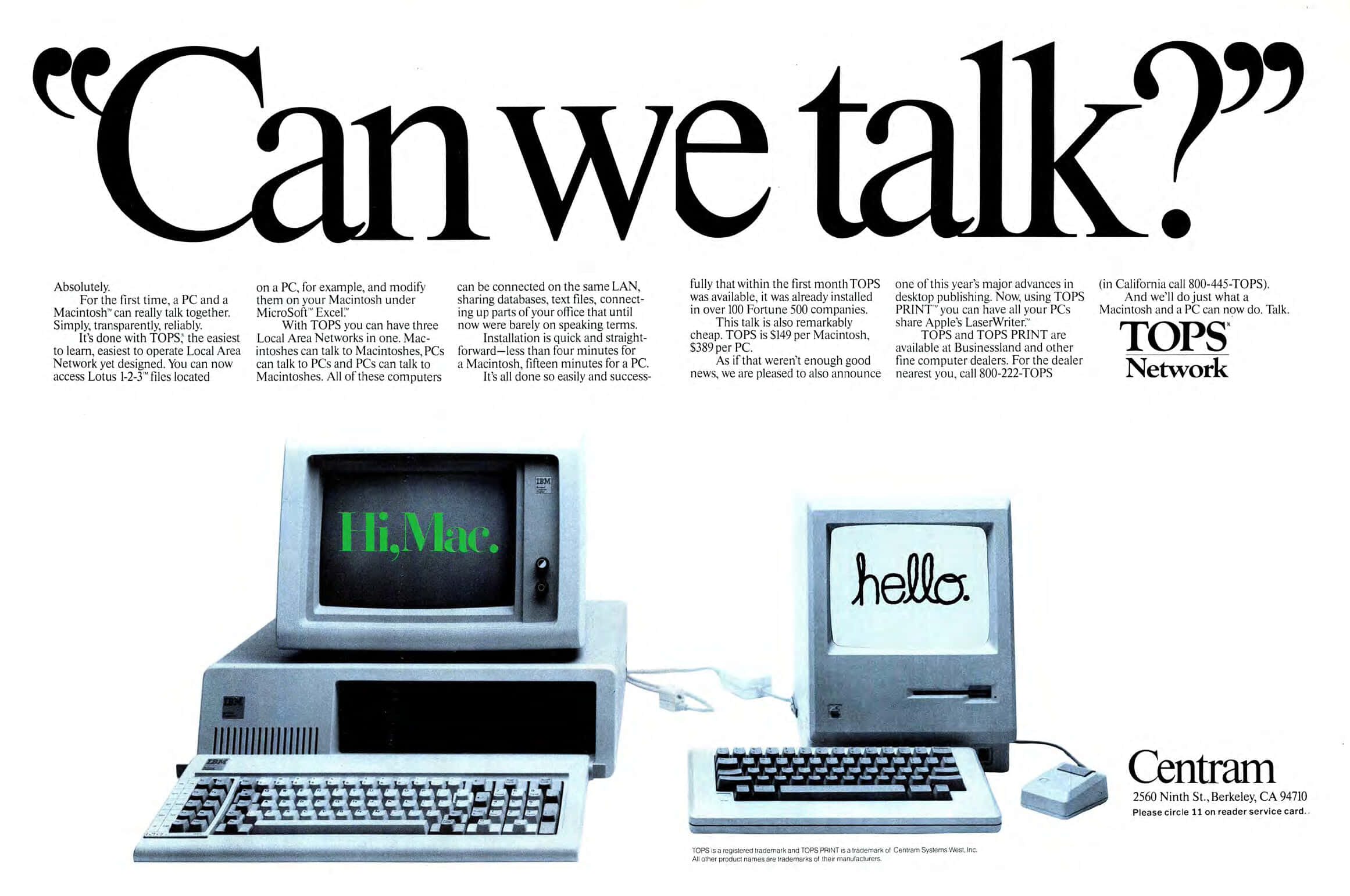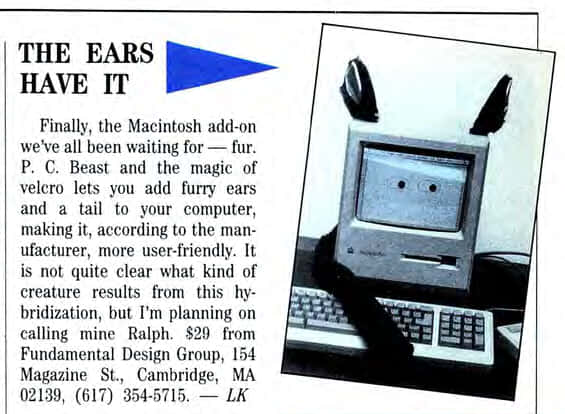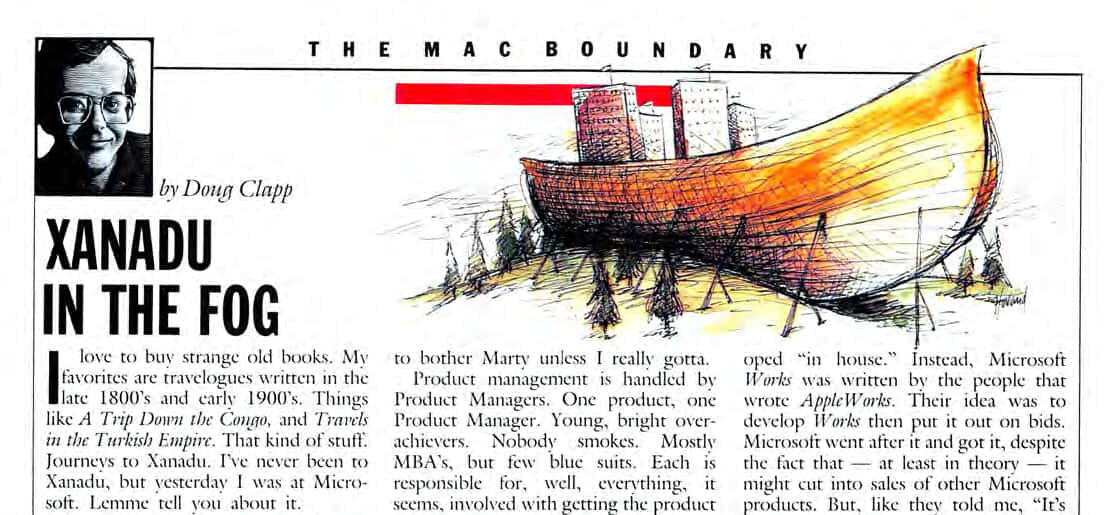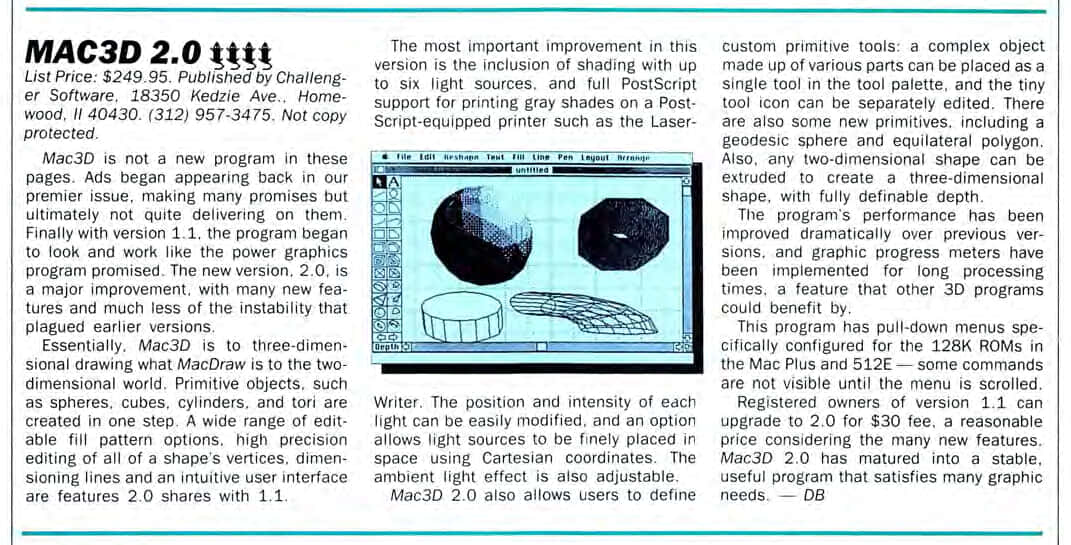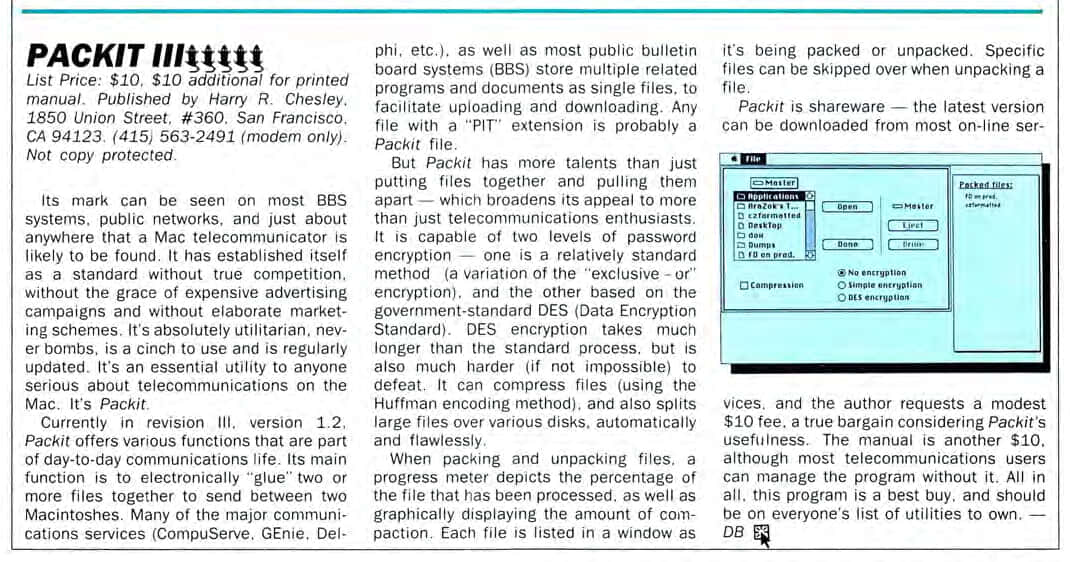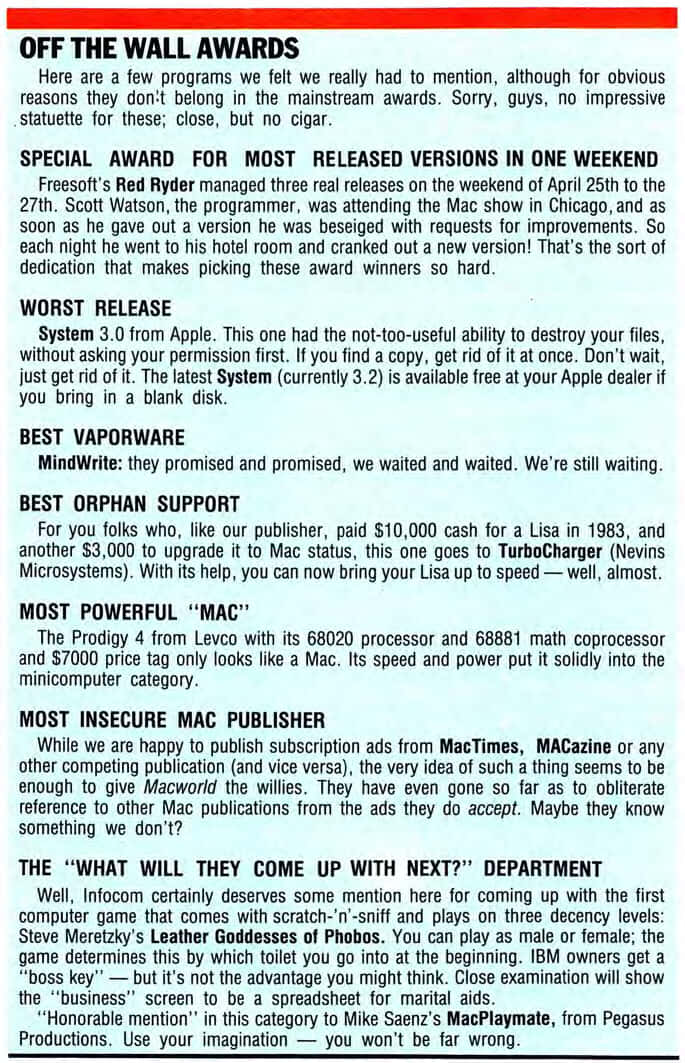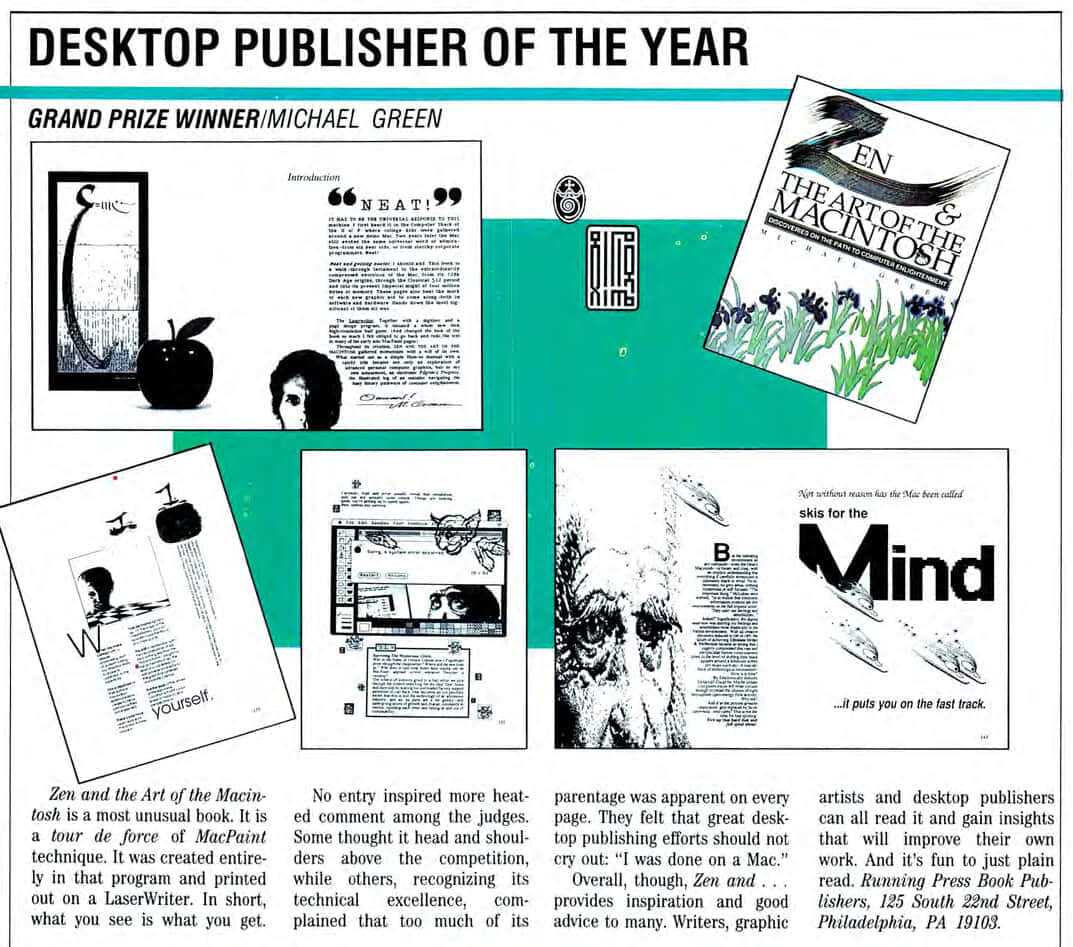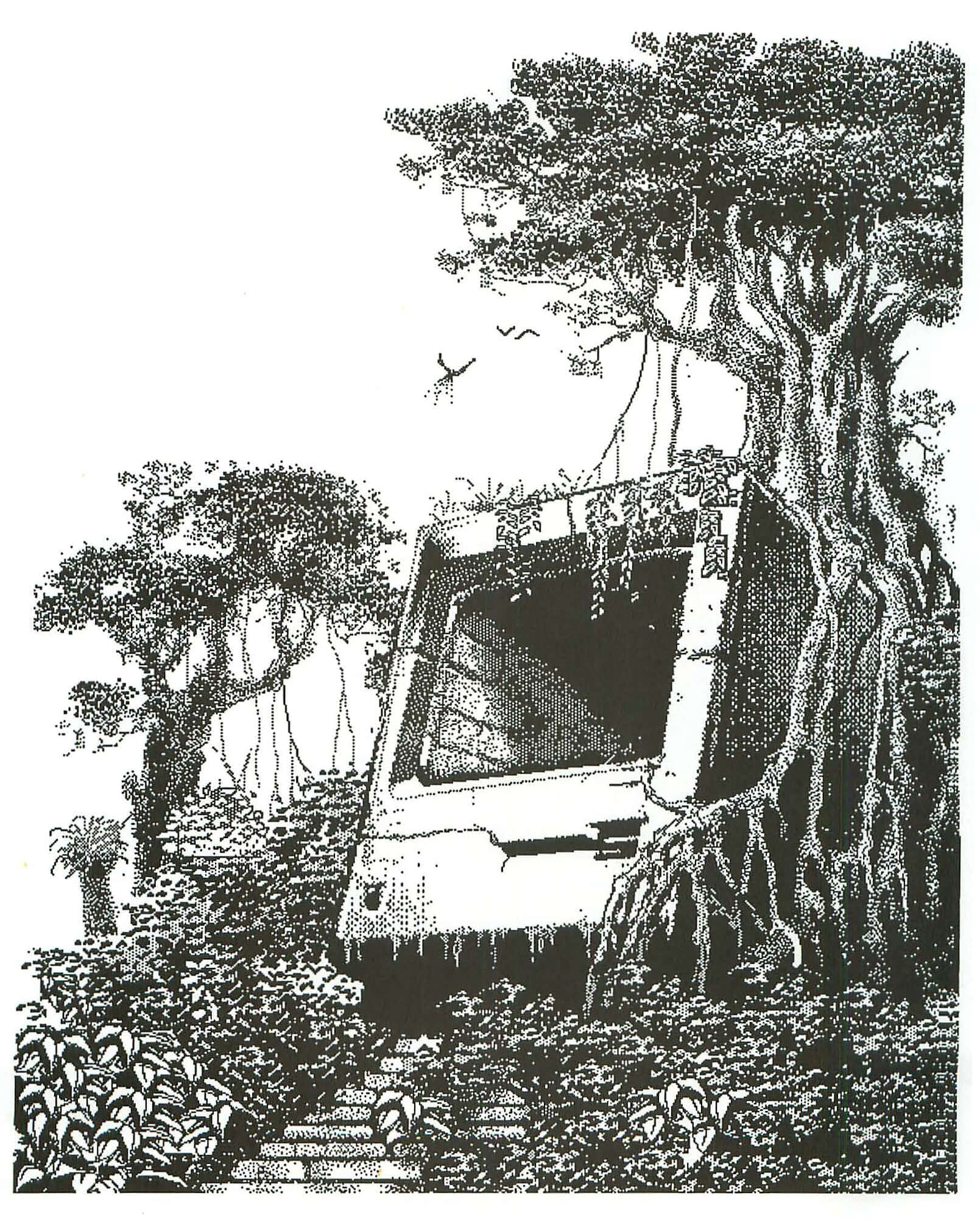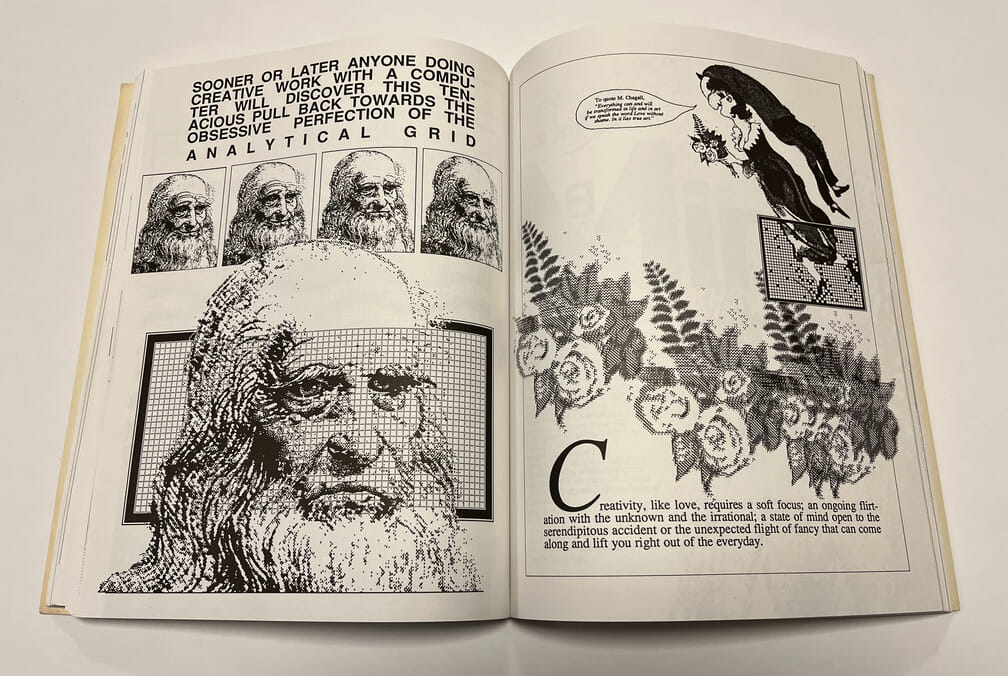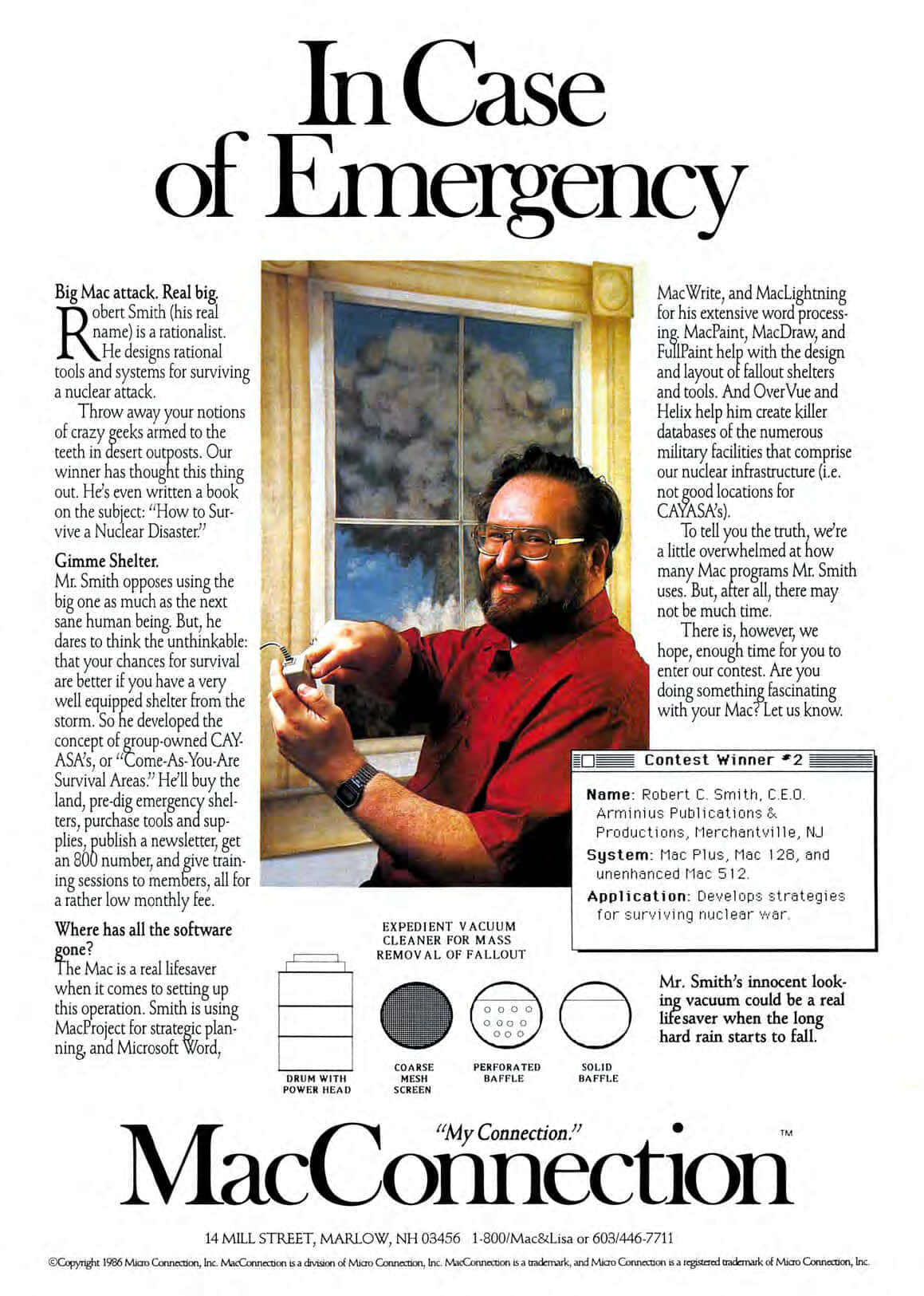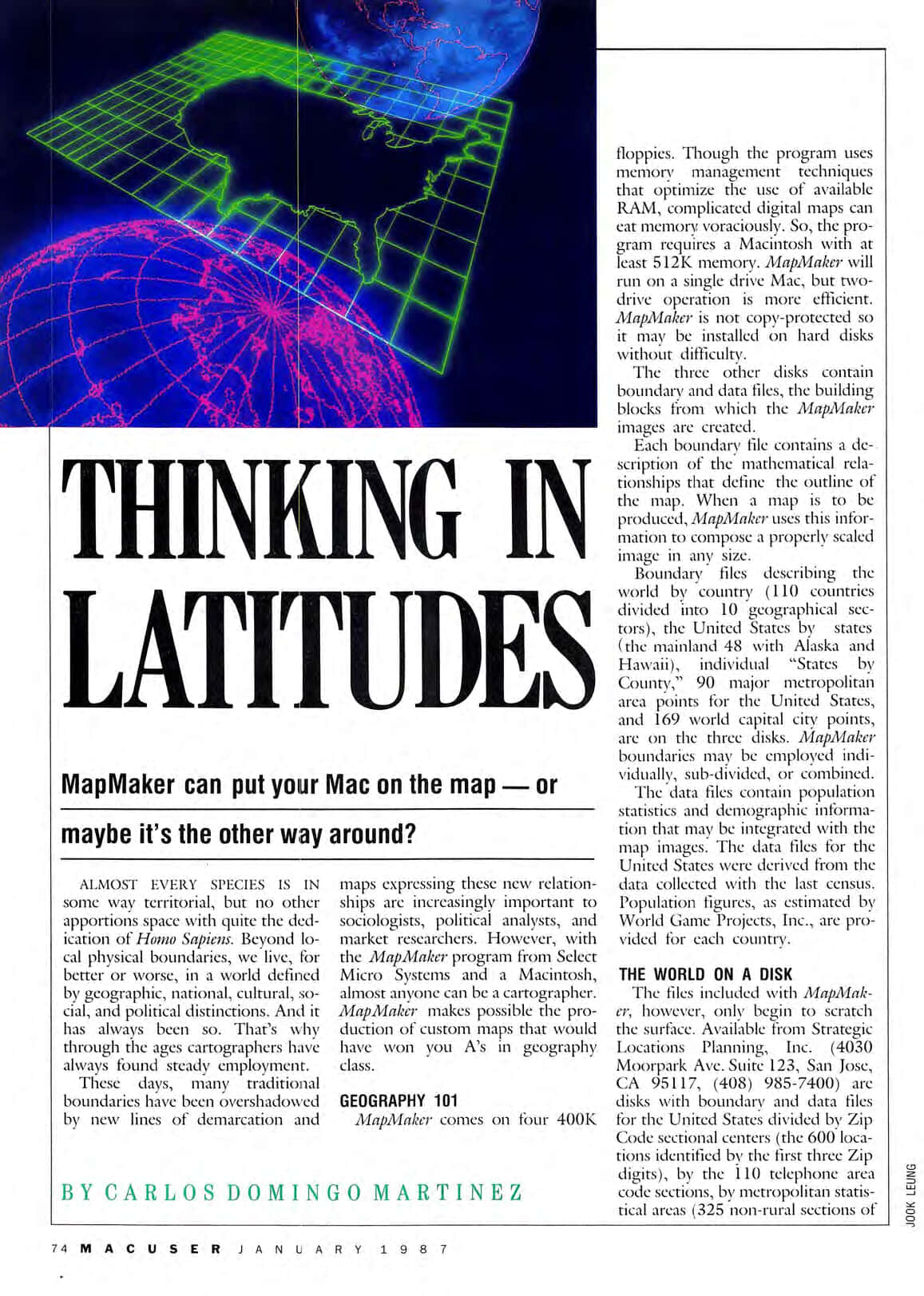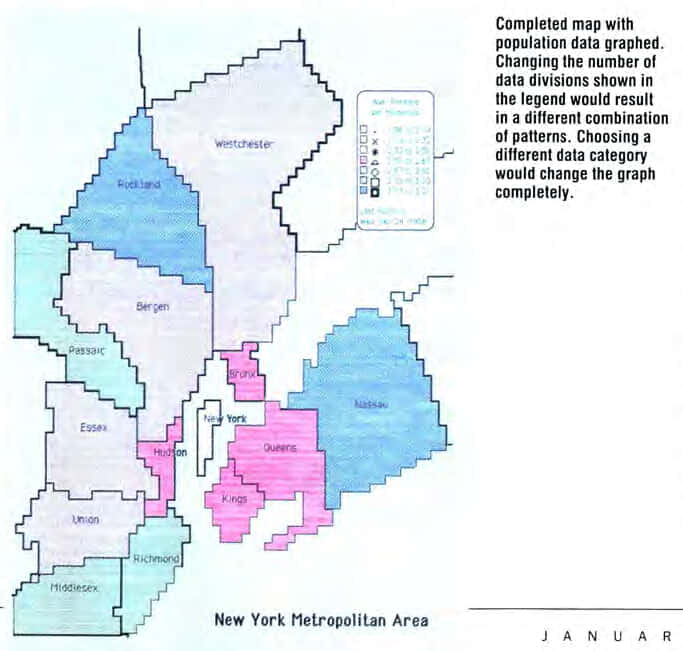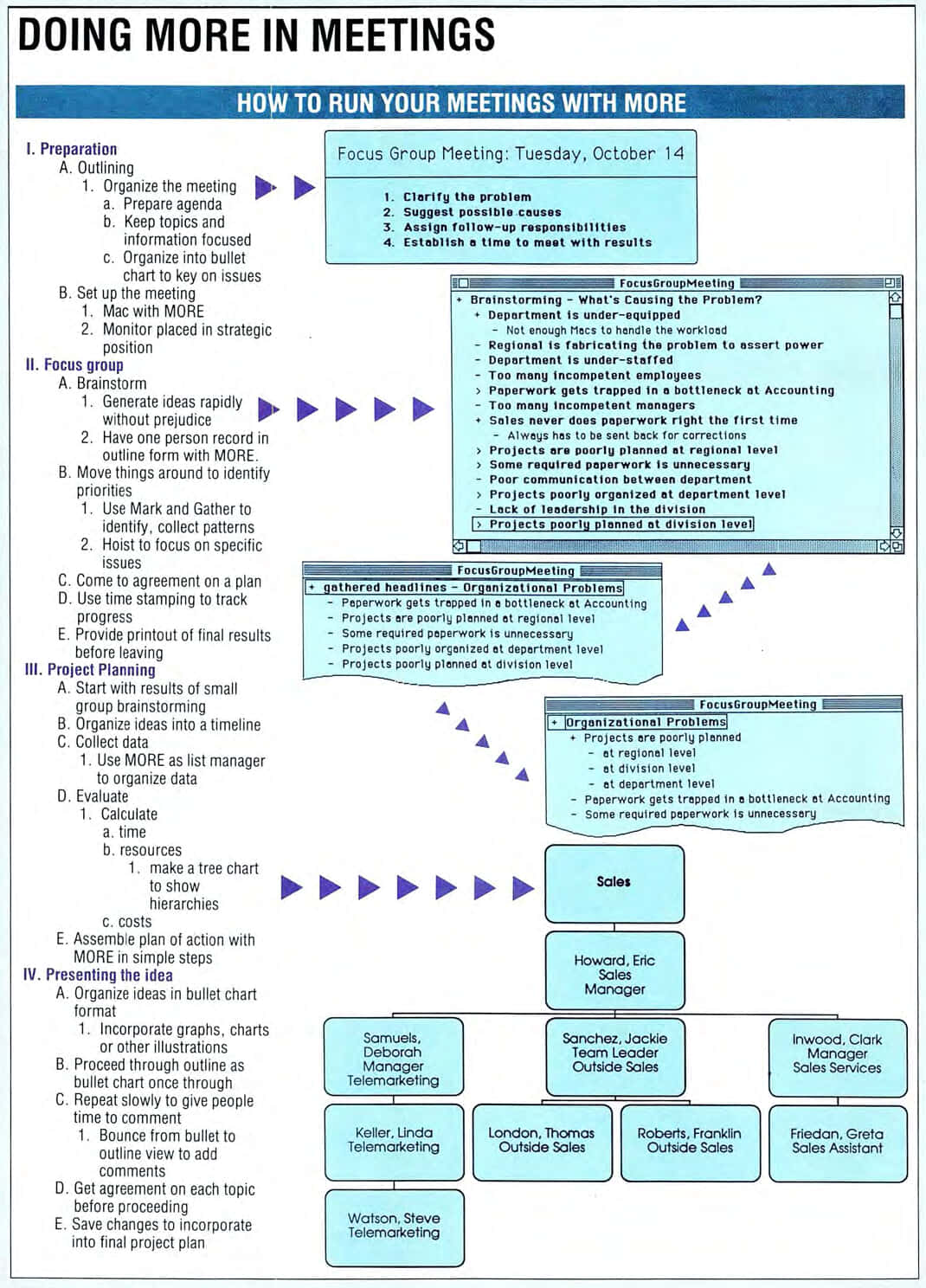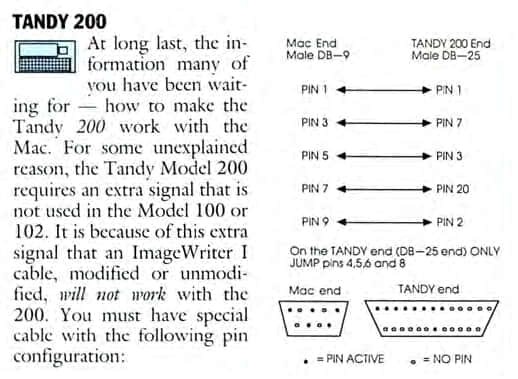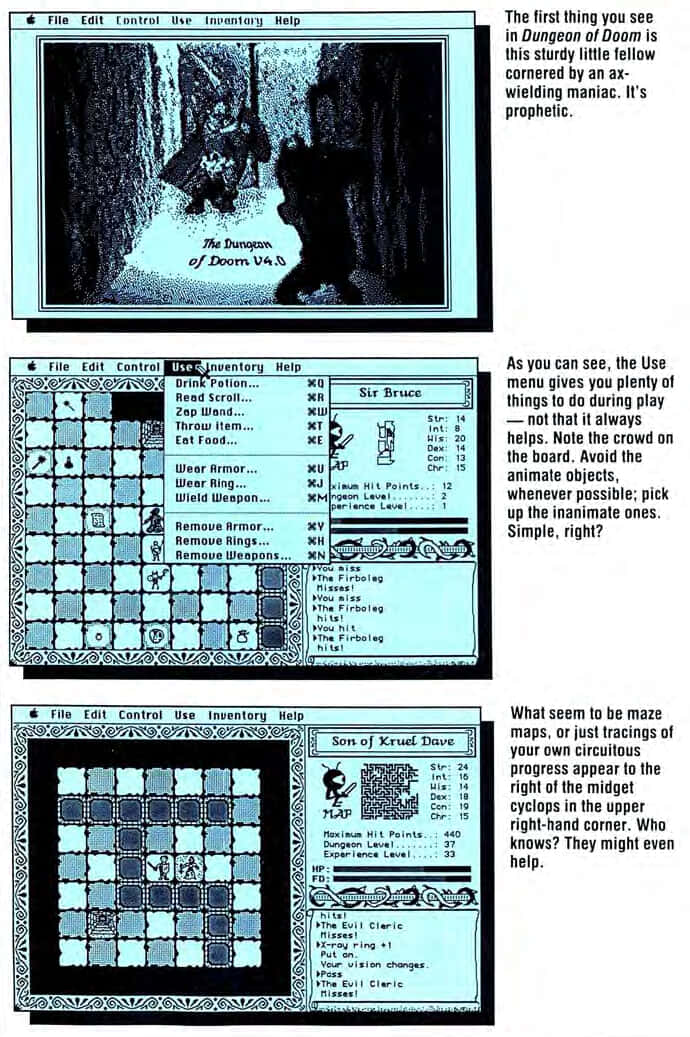Mac History 87.01 - Zen and the Art of the Macintosh
This month, we marvel at Zen and the Art of the Macintosh, enter the Dungeon of Doom, seek a guru for Apple, visit Microsoft in Seattle, discover the best products of 1986, do more with MORE, put a tail on our Mac, and prep for nuclear attack.
This is A Macintosh History: a history of the early Apple Mac told through the pages of MacUser magazine. This post is based on the January 1987 issue. New to the series? Start at the beginning with Welcome to Macintosh (Oct ‘85).
Share your thoughts with @WillFlux on Mastodon or Twitter. If you like what I do, sponsor me. 🙏
January 1987
Pick up your copy of MacUser January 1987 from the Internet Archive. Download 68K Mac software from Macintosh Garden and Macintosh Repository.
Can We Talk?
Every Mac had AppleTalk (LocalTalk) built in. During 1987, companies will significantly expand the uses for Mac networking. This month, we find an advert from TOPS Network offering to connect your Mac to a PC (page 12).
You can now access Lotus 1-2-3 files located on a PC, for example, and modify them on your Macintosh under MicroSoft Excel.
We’ll have much more network coverage in the May ‘87 issue. In the meantime, have you tried building a network with PhoneNET or playing MazeWars?
Letter: Across The Sea
David Hewson, from England, longs for more software across the pond (page 26).
Every new issue of MacUser fills me with admiration and envy. We UK Mac users watch the software available to you in the United States like hungry lions. Do you realize how little of it ever leaves your shores?
The Ears Have It
P. C. Beast makes your Mac huggable on page 40.
Finally, the Macintosh add-on we’ve all been waiting for - fur. P. C. Beast and the magic of velcro lets you add furry ears and a tail to your computer, making it, according to the manufacturer, more user-friendly.
Alas, I’ve been unable to find a good photograph of the P. C. Beast in action.
Xanadu in the Fog
Doug Clapp visits Microsoft in Redmond and contrasts the culture with Apple (page 43).
Up north in Redmont (sic), a Seattle suburb, Microsoft is lost in the fog. I wore my favorite gray cardigan to visit; Seattle responded with a gray pullover with a hood.
Inside, it’s quietly busy. Unlike Apple, where many (most?) employees work in cubicles, here people have offices; real offices with doors and windows. Not big or fancy offices; small, neat offices: a desk, an IBM (or Compaq), a Macintosh.
Microsoft, despite being the world’s largest software house, doesn’t have an ivory tower mentality. And I’ve got a hunch they enjoy the scrap.
That Microsoft “gives good product” isn’t surprising. The surprises will likely come later this year, when Microsoft proves they weren’t kidding about CD-ROM technology.
Mac3D 2.0
Mac3D 2.0 gets a quick review on page 51.
Essentially, Mac3D is to three-dimensional drawing what MacDraw is to the two-dimensional world. Primitive objects, such as spheres, cubes, cylinders, and tori are created in one step.
The most important improvement in this version is the inclusion of shading with up to six light sources, and full PostScript support for printing gray shades on a PostScript-equipped printer such as the LaserWriter.
See also Shades of Gray (Dec ‘86) and find an advert for the original Mac3D in the launch issue (Oct ‘85).
Packit III
There’s much praise for the “essential” Packit on page 51.
Its mark can be seen on most BBS systems, public networks. and just about anywhere that a Mac telecommunicator is likely to be found. It has established itself as a standard without true competition, without the grace of expensive advertising campaigns and without elaborate marketing schemes. It’s absolutely utilitarian, never bombs, is a cinch to use and is regularly updated. It’s an essential utility to anyone serious about telecommunications on the Mac. It’s Packit.
2nd Annual Editor’s Choice Awards
MORE is MacUser’s product of the year (page 53). We have additional MORE coverage later in this issue.
MORE from Living Videotext was a clear winner. It gives users unprecedented productivity power. One user summed it up by saying that before he does anything, he checks first to see if it can be done in MORE. More often than not, it can. A superb product which uses the Macintosh interface to the fullest.
I won’t list all the winners here, but the Off the Wall Awards caught my eye.
Most Powerful “Mac”
The Prodigy 4 from Levco with its 68020 processor and 68881 math coprocessor and $7000 price tag only looks like a Mac. Its speed and power put it solidly into the minicomputer category.
Read more on the Prodigy 4 and Workstation Potential of the New Macs from MacTech in March 1987 (via archive.org).
The paper demonstrates that the 32 bit, 16 Mhz Macintosh with Levco board costing $6,000 can perform simulations in FORTRAN at approximately one half the speed of a $250,000 super mini-computer and approximately one tenth the speed of a multi million dollar mainframe.
We’ll be covering the Macintosh II launch (with 68020+68881) soon. Stay tuned.
Desktop Publisher of the Year
MacUser and Apple join together to honour the best and brightest of the desktop publishers starting on page 58. Sadly, the scanned version of MacUser doesn’t do the designs justice.
The grand prize winner is Michael Green for Zen and the Art of the Macintosh.
Zen and the Art of the Macintosh is a most unusual book. It is a tour de force of MacPaint technique. It was created entirely in that program and printed out on a LaserWriter.
“Michael Green takes command of the Macintosh as surely as a Zen painter handles a brush. The result is a revelatory approach to computing.” - Steven Levy
You can find discoveries on the path to computer enlightenment from Zen and the Art of the Macintosh (PDF) in the Internet Archive. If you haven’t read and admired the MacPaint illustrations in this book, you’re in for a treat.
In Case of Emergency
This month’s MacConnection advert highlights Robert Smith’s preparation for nuclear attack (page 63).
Smith is using MacProject for strategic planning, and Microsoft Word, MacWrite and MacLightning for his extensive word processing. MacPaint MacDraw and FullPaint help with the design and layout of fallout shelters and tools. And OverVue and Helix help him create killer databases of the numerous military facilities that comprise our nuclear infrastructure…
Watch Protect and Survive (produced by the British government between 1974 and 1980) for a different take on surviving a nuclear attack.
Thinking in Latitudes
Map-making comes to the Macintosh with MapMaker (page 74).
…we live, for better or worse, in a world defined by geographic, national, cultural, social, and political distinctions. And it has always been so. That’s why through the ages cartographers have always found steady employment… with the MapMaker program from Select Micro Systems and a Macintosh, almost anyone can be a cartographer.
MapMaker comes on four 400K floppies. Though the program uses memory management techniques that optimize the use of available RAM, complicated digital maps can eat memory voraciously. So, the program requires a Macintosh with at least 512K memory.
Boundary files describing the world by country (110 countries divided into 10 geographical sectors), the United States by states (the mainland 48 with Alaska and Hawaii), individual “States by County,” 90 major metropolitan area points for the United States, and 169 world capital city points, are on the three disks.
Although I have referred to this program as a digital atlas, MapMaker will not give Rand-McNally any sleepless nights. Useful as they are, MapMaker maps lack detail. In a world projection or a map of a large region, where any map will sacrifice some detail, this is not a great deficiency. But in maps of smaller areas, the level of detail does not rise commensurately with the larger scale of the image. Today’s microcomputers do not have the resolving power to display atlas quality images.
That it is less than perfect in its first incarnation does not deter me from recommending it. After all, the true forte of MapMaker is the correlation of data variables with geographic constants. And this is accomplished competently and elegantly. Cartography and geographic analysis have become simple and affordable.
Doing More in Meetings
MORE won MacUser’s product of the year. On page 8 of the Desktop Productivity supplement, we learn what it can do for your meetings.
I went into Wezard International’s staff meeting prepared to be bored out of my skull. Meetings are always dull, uninspired arenas for petty politics, wasteful of time and energy and minimally productive. I usually spend the majority of my time in meetings doodling airplanes or birds, which I know from my college psychology class are images representing a desire to escape.
Anyway, I didn’t expect this particular meeting to be any different… As it turned out, I was totally unprepared for what happened. I walked into a room set up with only a table and chairs, a Macintosh computer, a video monitor and a printer. I walked out slightly dazed carrying four sheets of brilliantly organized information and a clear set of goals to achieve over the next several days. I wasn’t even aware at the time that I had left behind 200 sheets of doodling paper, untouched.
Find additional MORE coverage in More Than Enough (Sep ‘86).
Tandy Hints & Tips
MacUser sang the praises of the Tandy 100 in You Can Take It With You (Aug ‘86).
However, connecting your Tandy 100 or 200 to your Macintosh can be tricky. This month’s hint and tips page (in the Desktop Productivity supplement) has what you need to get your Tandy and Macintosh talking.
Sharing the Dungeon
The Dungeon of Doom awaits you on page 118.
It may be just another day for you, but I’ll be spending most of the evening escaping skeleton warriors and being attacked by a flying blob called the Black Pudding.
What’s more, instead of the usual mild-mannered me, I’ll be the ferocious fighter Son of Kruel Dave, out on a quest for the Orb of Carnos. Without it, I’m going to be stuck forever in a monster-ridden 40-level subterranean dungeon ruthlessly ruled by the Dark Wizard.
You’re right, I’ve flipped. I’m addicted to one of the most popular and perhaps most misunderstood adventure games in Mac history: John Raymonds’ shareware classic, Dungeon of Doom.
Raymonds was inspired to write the game by two things: an excuse to teach himself C, and his disappointment with the Mac version of Ultima II.
Version 4 is currently available from national electronic services and local BBSs. The file is longish (180K) and requires about 30 minutes to download at 1200 baud, so you may want to check out BBSs or friends first.
Now is definitely the time to start enjoying D of D - and to pay for it. Raymonds says there will be no shareware version 5. Instead, he plans to market an improved, commercial version (sure to include digitized sound, for one thing) of the game, along with source code as a programming example of using C in the Mac interface.
The enhanced commercial version was renamed The Dungeon Revealed. See also Honorware’s falling foul of dishonesty (AppleUser Nov ‘87 via archive.org).
We’ve also covered Fantasy Role-Playing Games (Oct ‘85) and Rogue (Feb ‘86).
Apple Needs a Guru
John Dvorak calls for the return of the guru on page 188.
But, to me, the signal that Apple is going the route of the button-down and boring was the lackluster presentation at the Plaza. We all expected some sort of show-biz pizzazz to open the show. Nope. Sculley wasn’t even announced. He just walked up on stage and started talking. Without his teleprompters, he stumbled and stuttered his way through a genuinely boring speech that lasted too long.
I recently spoke at an Apple event and had a conversation with some Apple executives. Ex-Apple project manager and software guru Trip Hawkins was there. Hawkins and I both agreed that Apple’s refusal to reinstitute a symbolic figure as a spokesman is a mistake.
I have a suggestion. Find Andy Hertzfeld and make him the Apple spokesman and guru. If you know much about Apple, then you know about Andy. He made Switcher and Servant and lots of other stuff. He’s a former employee and still associated with the company. Furthermore, Andy is full of enthusiasm, full of ideas, full of company pride. In short, Andy is full of it. Perfect!
While Andy thinks I’m a jerk because I’m not enamored of his buddy “Steve,” I’m rather sincere about this idea. He’s the last chance Apple has to regain its credibility as the computer company for the “rest of us.” Every great computer company needs a guru, a bean counter and a hot operations chief. Apple has everything but the guru.
It’s ironic. A few years ago it had nothing but gurus.
Trip Hawkins founded Electronic Arts (EA) in 1982 for “software artists”. The Digital Antiquarian has extensive coverage of EA’s early days, starting with Seeing Farther.
Andy Hertzfeld needs no introduction; check out some of our previous coverage: Apple Talks About Switcher (Dec ‘85), Andy Hertzfeld: Quotable Quotes (Jan ‘86), A Switch in Time Saves Eight (Jun ‘86), and ThunderScan advert (Aug ‘86).
Other Features and Reviews
- Direct ICONtact - Delphi’s Mac Users’ Group (page 68)
- Neither Black Nor White - GrayPaint Review (page 80)
- Desktop Productivity Supplement (after page 84)
- Getting Productive (page 4)
- Integrated Circus: Jazz vs. Microsoft Works (page 12)
- Head To Head: Excel Vs. 1-2-3 (page 18)
- Not Just Another Pretty Base - Reflex And FileMaker Plus (Page 22)
What’s Next?
Next time, A Macintosh History travels to February 1987, with SuperPaint, the Leather Goddesses of Phobos, and Dynamac: an unofficial portable Macintosh. In the meantime, check out the rest of SystemTalk.

